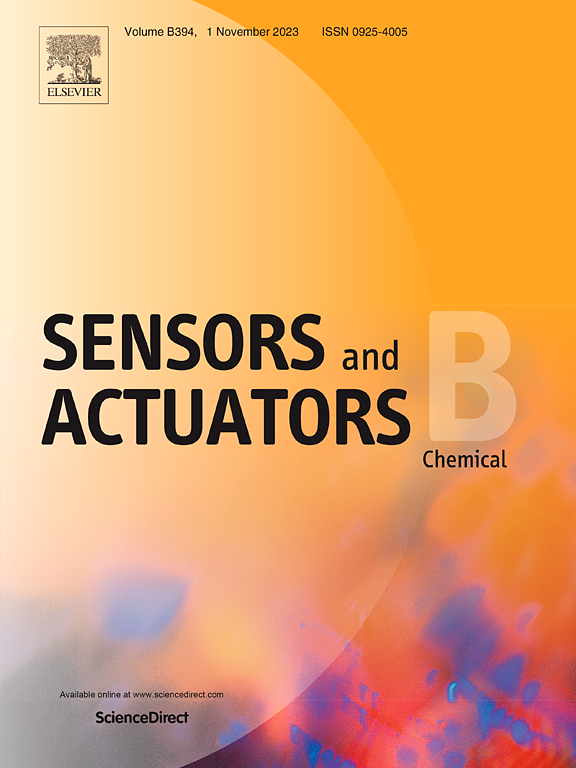Microchannel-based portable sensor for p53 gene based on CRISPR/Cas12a using multimeter as readout
IF 8
1区 化学
Q1 CHEMISTRY, ANALYTICAL
引用次数: 0
Abstract
The DNA intensity modified on the surface of the inner wall of microchannel can regulate the resistance of the microchannel and which can be used to design biosensors for diverse targets. In this study, a portable biosensor based on the regulation of the charge density in microchannel using multimeter as redout had been designed for disease related DNA sequence detection (p53 gene had been chosen as model target). The inner wall of microchannel was functionalized with ssDNA firstly, where target p53 activated Cas12a via crRNA, whose cleavage activity altered the inner surface charge density, thereby changing resistance of the channel, which can be detected by a simple multimeter easily. Key operational parameters such as KCl concentration, CRISPR/Cas12a cleavage time, the concentration of modified ssDNA, and the amounts of Cas12a/crRNA complex were systematically optimized to enhance detection performance. Under optimized conditions, the changing of the resistance of the channel exhibited a linear relationship with the logarithm of p53 gene concentration ranging from 50 fM to 50 pM, achieving a detection limit of 15 fM (S/N = 3). The sensor demonstrated high sensitivity, specificity, and operational convenience, offering a promising point-of-care testing for disease related DNA detection.基于CRISPR/Cas12a的便携式p53基因微通道传感器,使用万用表作为读数
在微通道内壁表面修饰DNA强度可调节微通道的电阻,可用于设计不同靶点的生物传感器。本研究设计了一种以万用表为输出点,基于微通道电荷密度调节的便携式生物传感器,用于疾病相关DNA序列检测(以p53基因为模型靶点)。首先用ssDNA功能化微通道内壁,其中目标p53通过crRNA激活Cas12a, crRNA的裂解活性改变了内表面电荷密度,从而改变了通道的电阻,这可以通过简单的万用表轻松检测到。系统优化KCl浓度、CRISPR/Cas12a切割时间、修饰的ssDNA浓度、Cas12a/crRNA复合物的数量等关键操作参数,提高检测性能。优化条件下,通道电阻的变化与p53基因浓度的对数在50 ~ 50 pM范围内呈线性关系,检测限为15 fM (S/N = 3)。该传感器具有高灵敏度、特异性和操作便利性,为疾病相关DNA检测提供了一种有前途的即时检测方法。
本文章由计算机程序翻译,如有差异,请以英文原文为准。
求助全文
约1分钟内获得全文
求助全文
来源期刊

Sensors and Actuators B: Chemical
工程技术-电化学
CiteScore
14.60
自引率
11.90%
发文量
1776
审稿时长
3.2 months
期刊介绍:
Sensors & Actuators, B: Chemical is an international journal focused on the research and development of chemical transducers. It covers chemical sensors and biosensors, chemical actuators, and analytical microsystems. The journal is interdisciplinary, aiming to publish original works showcasing substantial advancements beyond the current state of the art in these fields, with practical applicability to solving meaningful analytical problems. Review articles are accepted by invitation from an Editor of the journal.
 求助内容:
求助内容: 应助结果提醒方式:
应助结果提醒方式:


